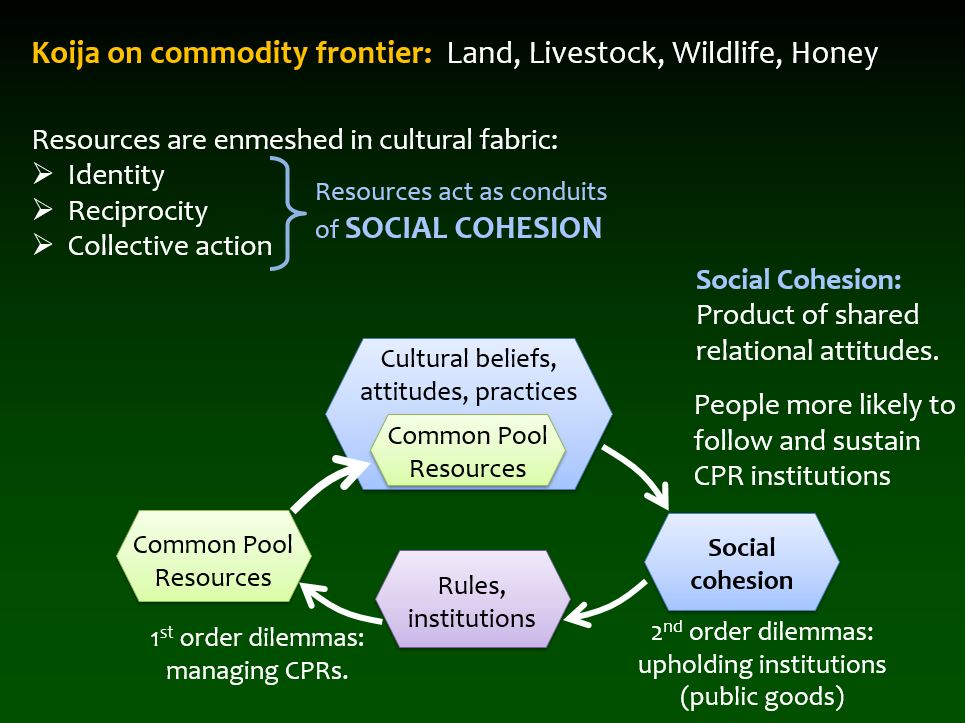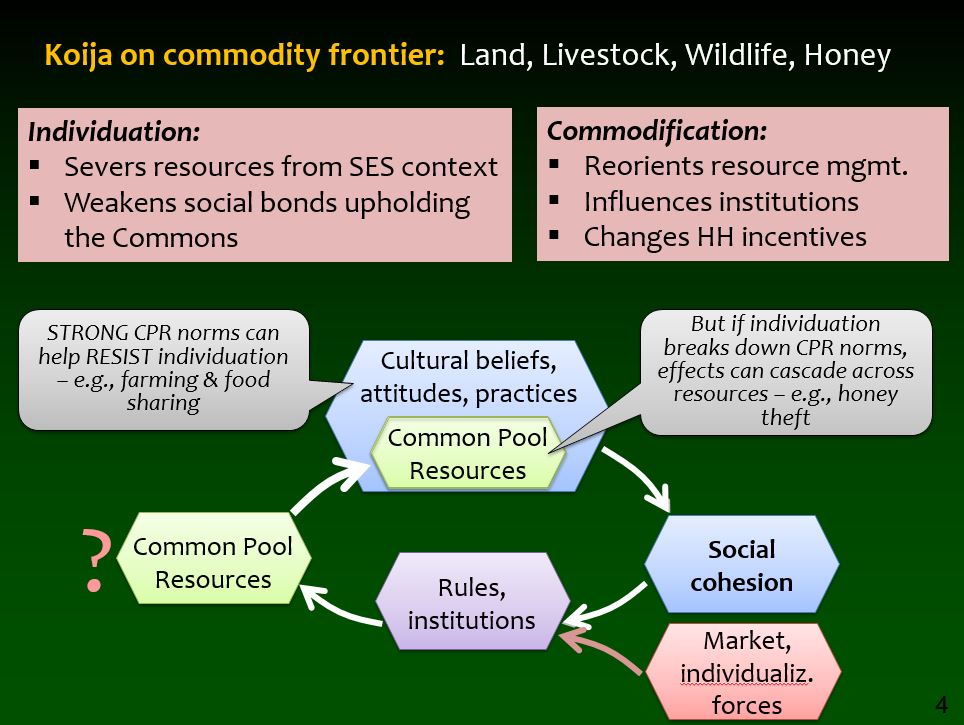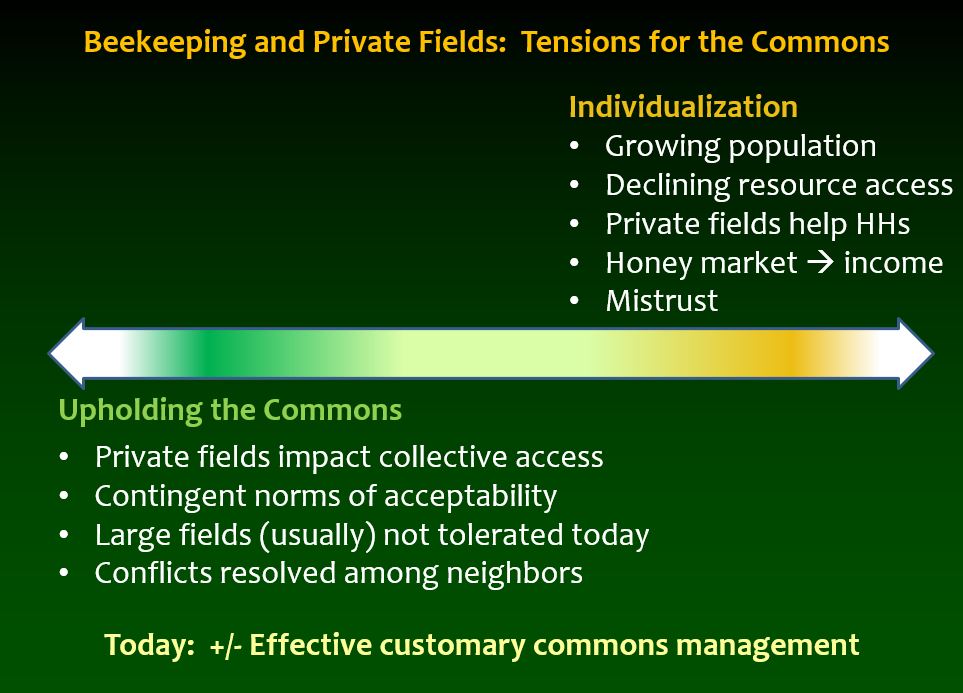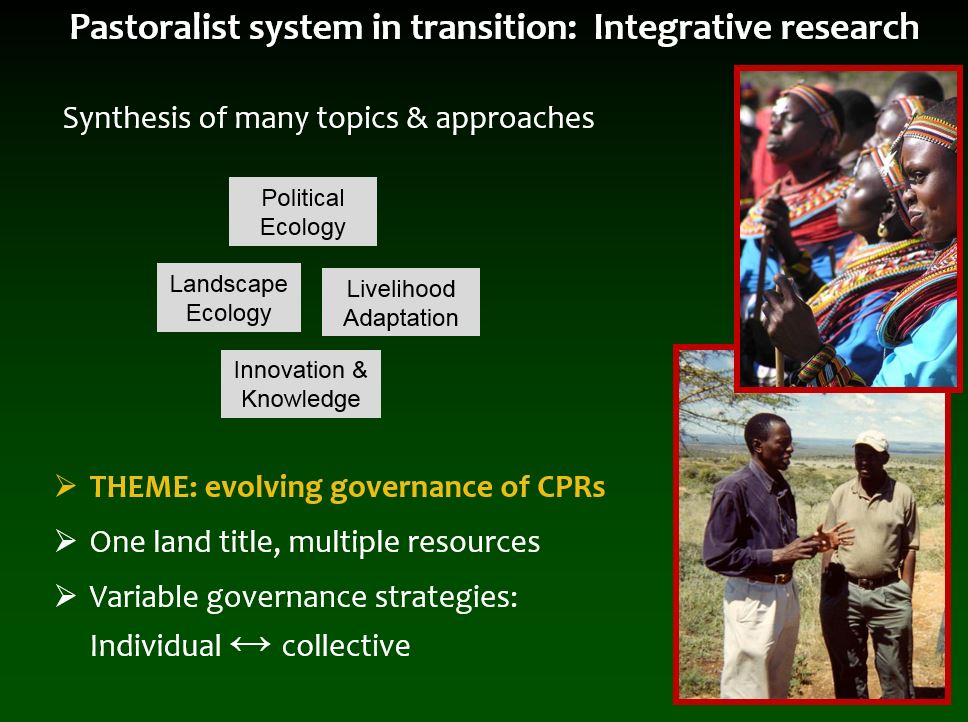This synthesis of trends in livelihood adaptation in a Kenyan pastoralist community focused on two themes, which interact to influence governance of common pool resources: (1) the broader phenomenon of commodity frontiers, and (2) social cohesion within communities. Gabriele Volpato, Laura German and I presented this at the International Association for the Study of the Commons — July 2019: Lima, Peru.
What is a commodity frontier? A rural community becomes part of a commodity frontier when it begins to experience the influence of market economies from more developed areas. This happens when markets penetrate the rural area in order to gain access to resources like land, livestock, milk, and honey, which are integral parts of the rural social-ecological system. A large-scale example of a commodity frontier is the Ecuadorian Amazon, where timber, gold, and oil resources in indigenous territories are now being appropriated by outside actors. In the community where we worked, several resources; including land, livestock, milk, and honey; are sought by outside actors.
What happens when resources become commodities in a broader market? Well, in addition to becoming things that can be bought and sold (commodification), another change described by Marxist scholars is a process called individuation: the resource is no longer treated as an integral part of the rural culture and lifeway. As Castree (2003) describes, individuation is the “representational and physical act of separating a specific thing or entity from … its social-ecological integument.” People in the rural community begin to see the resource in a different way…
How does individuation affect social cohesion? The resources we examined — land, livestock, milk, and honey — all play important social, cultural, and economic roles in the pastoralist society we studied. Land is shared and collectively governed. There are numerous customary practices in which livestock are exchanged between families to forge relationships and provide safety nets. Milk is shared among neighboring households. Honey plays an important role in social events and ceremonies, and links this community to their ethnic heritage. These resources are very meaningful threads in the fabric of a society that relies on norms of reciprocity for its resilience. In other words, these resources are conduits of social cohesion, and social cohesion is very valuable condition for collective governance. When people in a community share a sense of social cohesion, they are more likely to cooperate and ‘buy into’ collective governance mechanisms.
 So, when social-ecological resources undergo individuation, we argue that they lose their strength as conduits of social cohesion, and when social cohesion is weakened, so are the norms and institutions that help this community manage its common pool resources.
So, when social-ecological resources undergo individuation, we argue that they lose their strength as conduits of social cohesion, and when social cohesion is weakened, so are the norms and institutions that help this community manage its common pool resources.
In our talk, we examined the tension between evolving conditions that promote individuation, versus conditions that still promote cooperation and upholding the commons. We looked at how those tensions were manifest in the institutions that govern the use of land, livestock, milk and honey.
 We conclude by discussing factors that tend to resist or promote the individuating effects experienced at the commodity frontier, and their implications for maintaining customary management of common pool resources.
We conclude by discussing factors that tend to resist or promote the individuating effects experienced at the commodity frontier, and their implications for maintaining customary management of common pool resources.
Castree, N. (2003). “Commodifying what nature?” Progress in Human Geography 27(3): 273-297.
